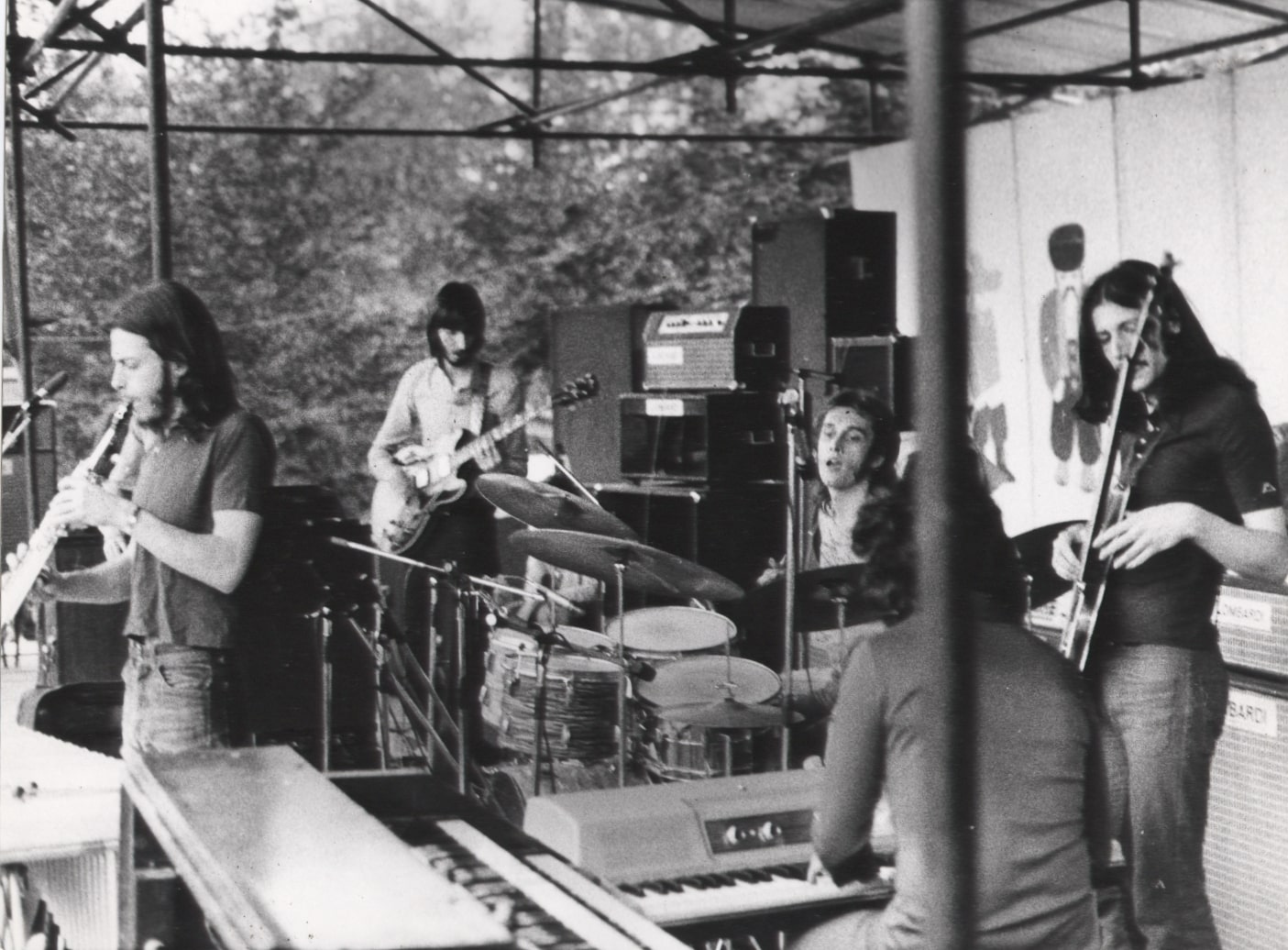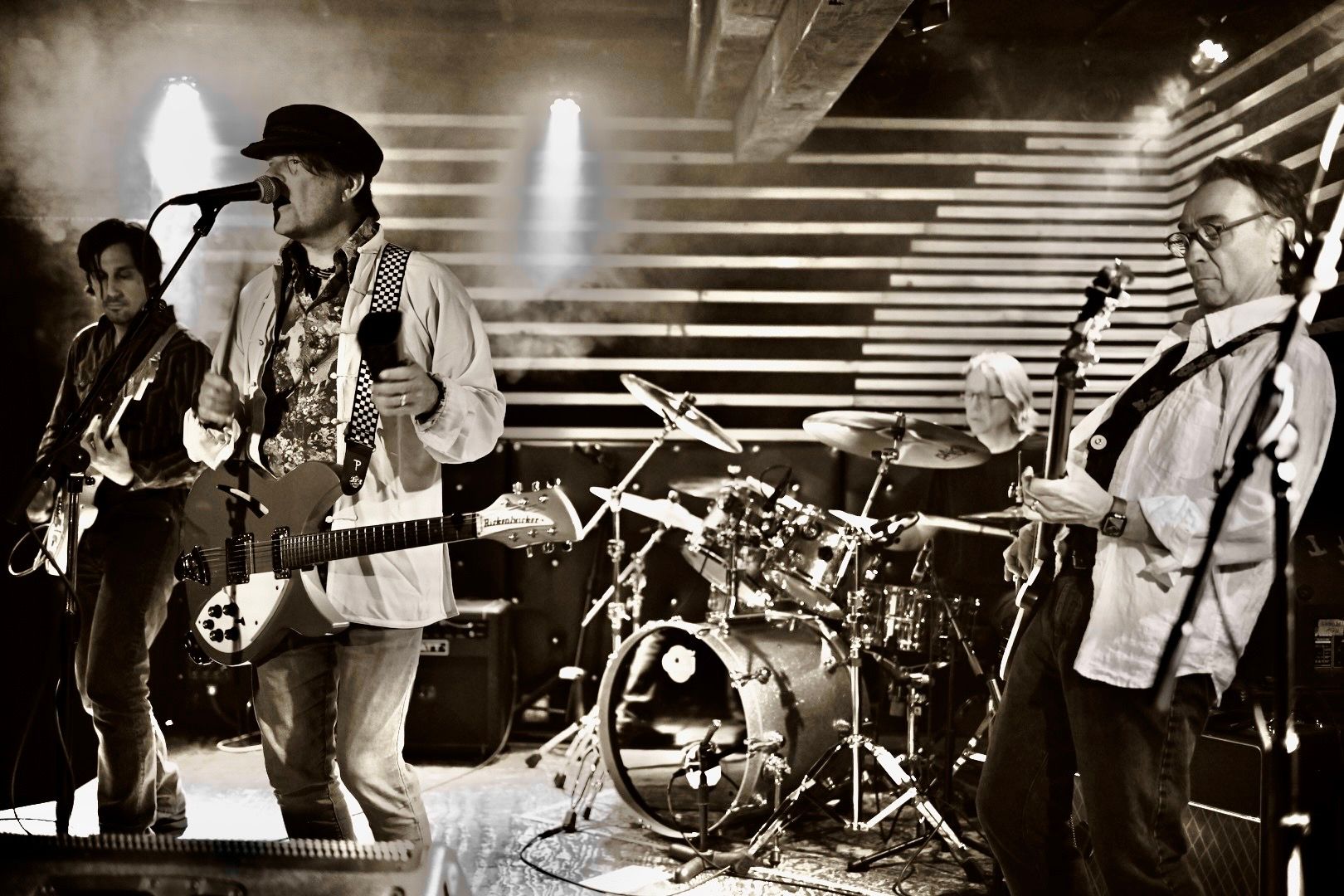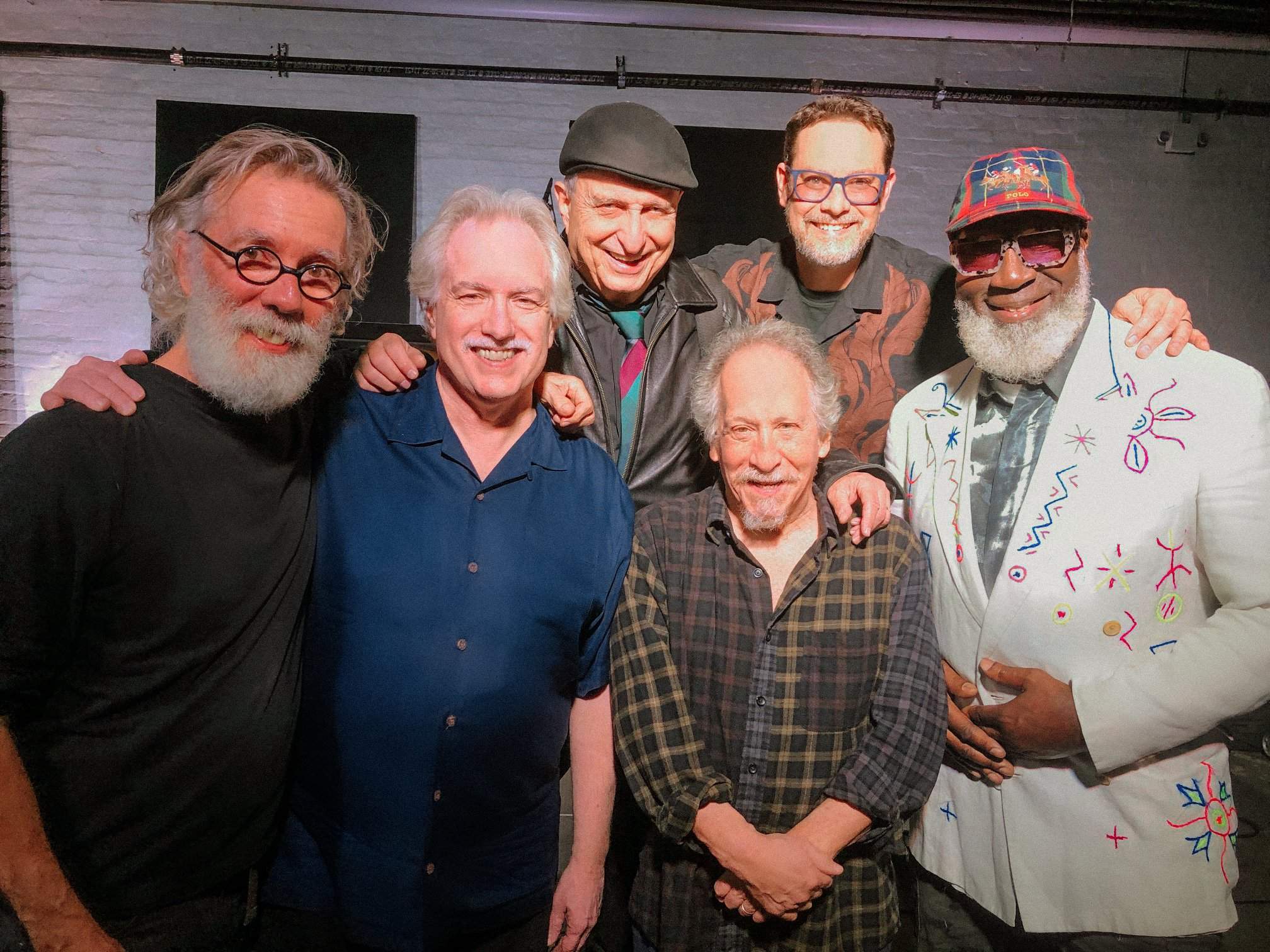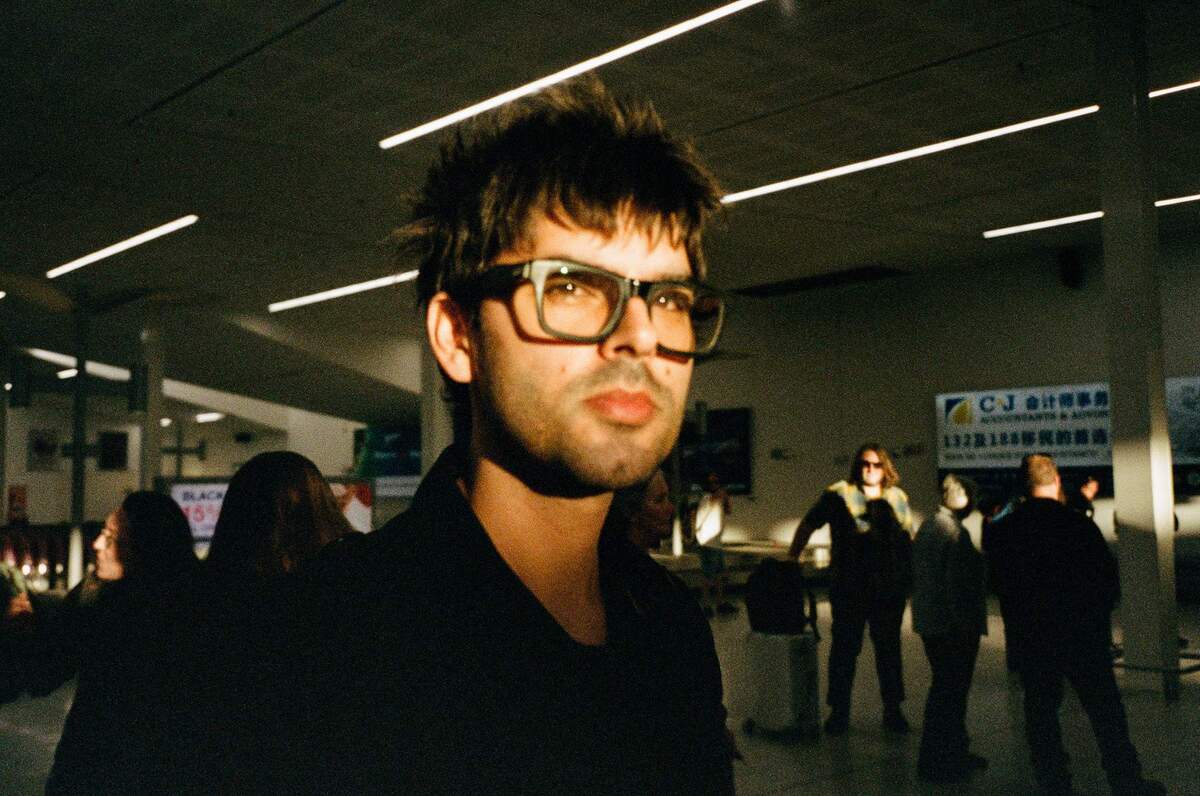Arti & Mestieri | Furio Chirico | Interview
Arti & Mestieri are one of the most important progressive rock bands from Italy. They are masters of unique, intense and delicate sound, in which jazz, progressive rock and Mediterranean influences blend together and create a language of great expressiveness and communication.
Arti & Mestieri released their debut album in 1974. The original lineup consisted of Furio Chirico (drums), Gigi Venegoni (guitars), Giovanni Vigliar (violin), Arturo Vitale (sax), Marco Gallesi (bass), and Beppe Crovella (keyboards). The band toured with legendary bands such as Premiata Forneria Marconi, Area and Gentle Giant. Arti & Mestieri released a dozen of albums and they are still very active. Warner Music Italy and King Records released ‘Essentia, Live In Japan’ in October 2020. It’s a wonderful box set containing a double CD and DVD. ‘Essentia, Live In Japan’ was recorded at Jazz Rock Legends in 2019.
‘Essentia, Live In Japan’ lineup:
Furio Chirico – drums/percussions/gong
Gigi Venegoni – guitars
Piero Mortara – accordion/keyboards/piano
Roberto Puggioni – bass, fretless bass
Lautaro Acosta – violin
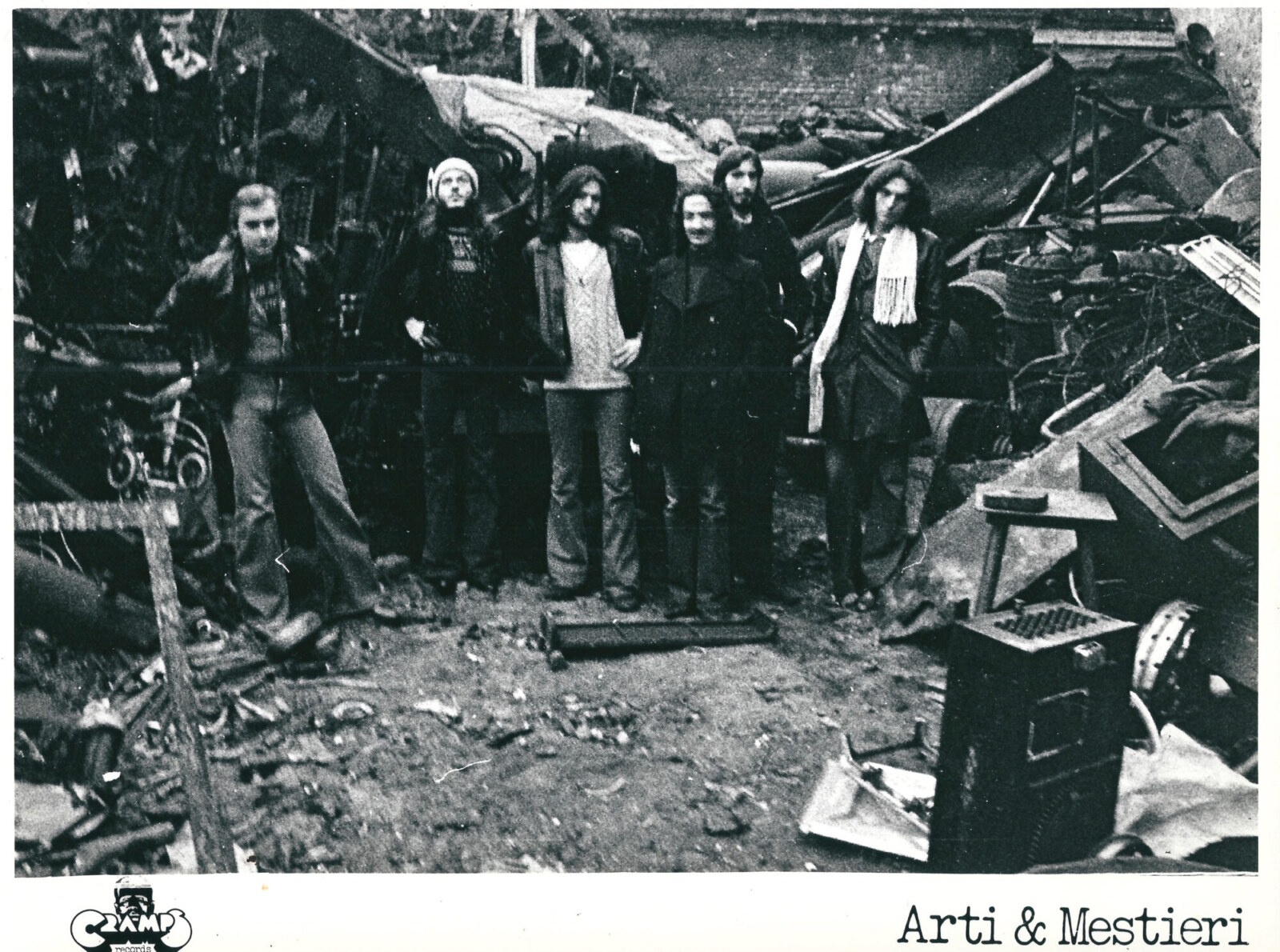
“Funnel being flooded with a huge amount of cultural information”
Where and when did you grow up? Was music a big part of your family life?
Furio Chirico: I was born in Turin, Italy, 17 years before Apollo 11 landed on the Moon. I can’t believe how time flies! Since I was a child, music and painting have been my passion. In the early sixties, in central Turin, my uncle owned the first music club in Italy for pop and rock music where international and Italian bands played live and people danced. I used to hang around there. In 1962 our dearest friend, actor Jerry Mazzone, came back from his German tour with a 45 rpm vinyl for me. It was The Beatles with Tony Sheridan, ‘Ya Ya’. On side A was Tony’s vocals but what really drove me crazy was side B, ‘Please Please Me’! The Beatles played only by The Beatles! It was new, simple but stupendously hot, striking deeply into my soul, and I thought “This is it!” Ever since then music has become my life. I started playing drums when I was very young, at the age of eleven.
Were you in any bands before I Ragazzi del Sole? What can you tell us about this band that recorded quite a bit?
In the sixties it was almost impossible, but thanks to my big fortune, at the age of fifteen I recorded a single with a band called I Ragazzi Del Sole, which went on the hit charts in Italy. Then I had a lot of experiences as a session player in all music genres.
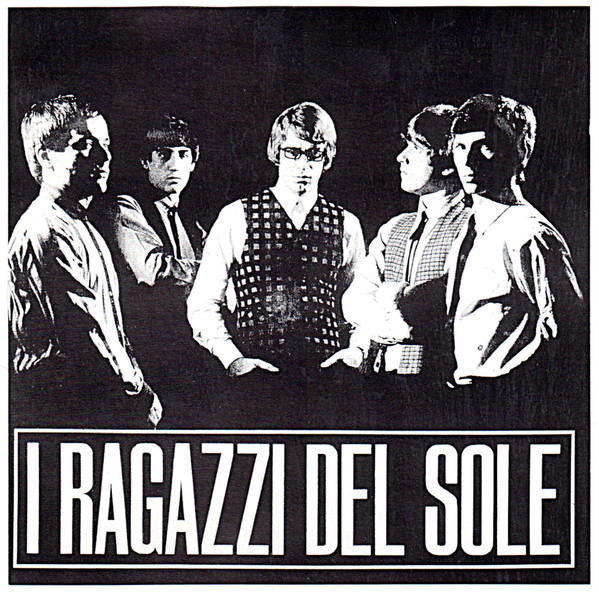
How did you become part of the international group, The Trip?
When Joe Vescovi joined the formation of The Trip in the sixties, I already had the opportunity to come into contact with The Trip, and then in 1972 I was invited directly by Joe Vescovi and Wegg Andersen. They told me: “We need your drums to play ‘Atlantide’ in the trio!”Wegg talked about Ritchie Blackmore like: “Ritchie is my best friend as an artist, but a little sloppy.” You know, Wegg and Richie both experienced the magical swing era of London in the sixties. Anyway, in 1972 I joined the Italian English band called The Trip in which Ritchie Blackmore of Deep Purple had been part of in the earlier days. In that year we recorded one of the most sold prog records in Italy called ‘Atlantide’.
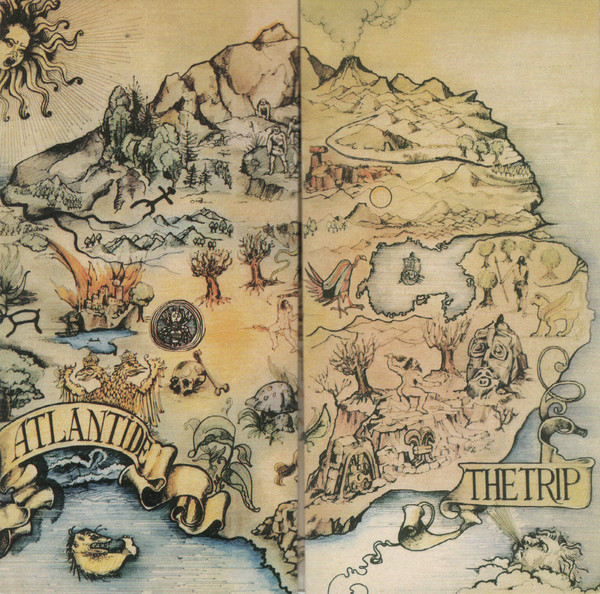
Even after I left The Trip to form Arti & Mestieri, I and Wegg continued to have a close relationship, sharing various cultural things.
You played on their third album ‘Atlantide’ and ‘Time of Change’. What do you recall from working on the material for these two albums?
Joe Vescovi called me to join The Trip, because he wanted a “progressive turnover” of the band, creating a trio without guitar. The previous two albums were more psychedelic and blues rock oriented… ‘Atlantide’ is the most important album for The Trip after turning to prog. To me it’s one of the most beautiful concept prog albums in music history. ‘Time Of Change’ is very complex and structured, too “advanced” in a certain direction, maybe a bit difficult to understand for people in those days. People understood much later the “evolution” of this album.
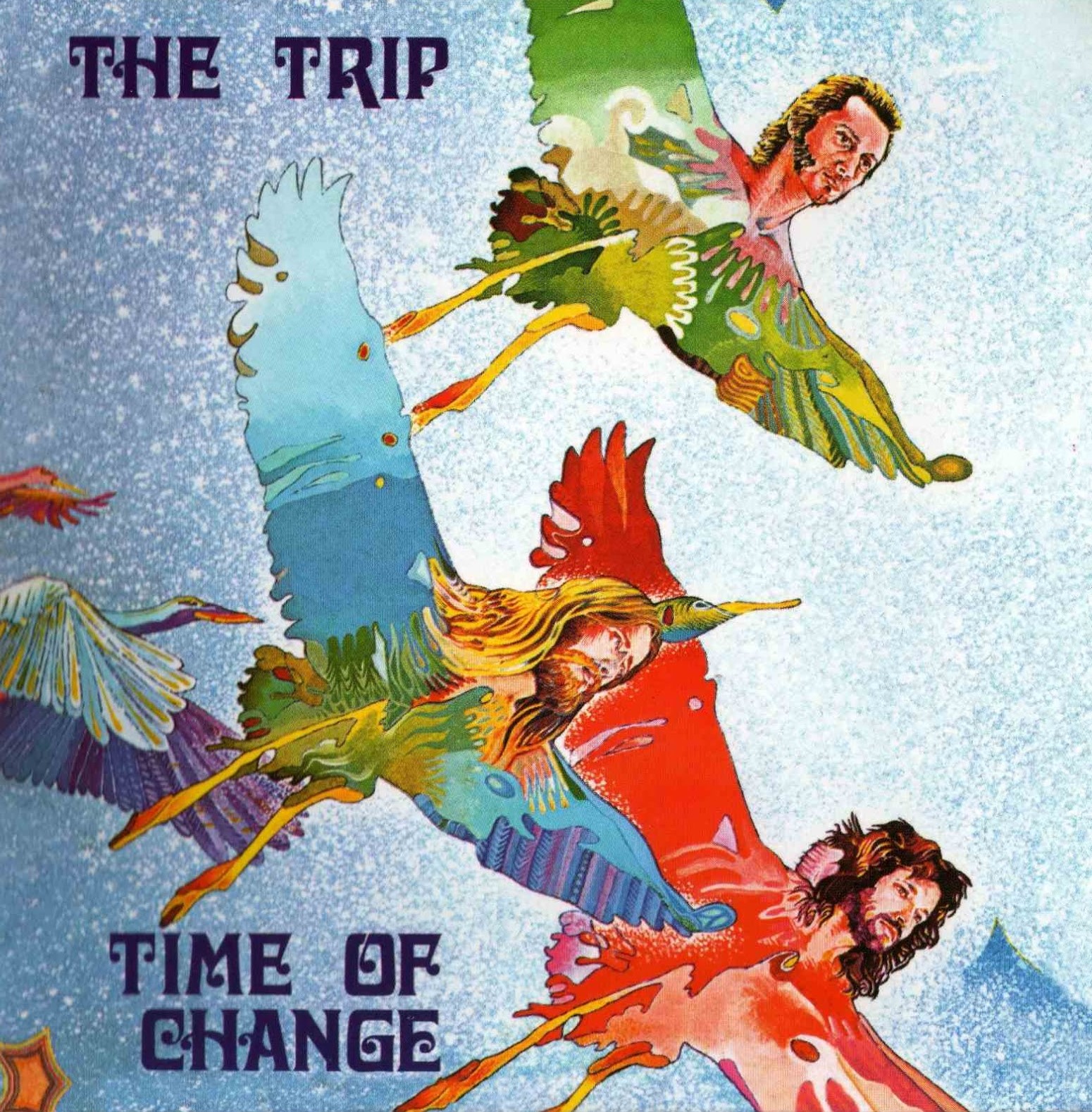
During the reunion of The Trip in 2010 and 2011, we participated in very important events where we recorded our full live performance. The first one was at The Prog Exhibition in Rome, Italy and the second concert was in Japan at The Italian Progressive Rock Festival on Nov 4th 2011. There will be surprises in the future for both “historical” and “new”… I would like to talk about it closer to the release date!
“After the big success of The Trip, I had felt a strong need to open a new musical direction”
Can you elaborate on the formation of Arti & Mestieri?
After the big success of The Trip, I had felt a strong need to open a new musical direction. Then in 1974 a musician friend from Il Sogno Di Archimede group told me that there was a new band about to be born in Turin. A new, unique and original band, formed by musicians with all different musical styles. From rock to jazz to even classical music. I went and had a listen and immediately found that they’ve got the stuff I have been searching for! Great initiative sound of prog but also jazz rock, completely original. I met there with the main composer and the guitarist Gigi Venegoni. I joined as the drummer and shortly after, with new compositions, Arti & Mestieri was born.
How did you decide to use the name “Arti & Mestieri”?
Let me explain the circumstances with Cramps and Gianni Sassi. The true origin of the name “Arti & Mestieri” was that, at our very early age we used to call ourselves “Arti”. It was Lello Palma’s idea. He was our original sound engineer and the graphic designer. He named us after Vitruvian Man of Leonardo Da Vinci, but Gianni Sassi who was very careful about current social problems and so attentive to the European culture, decided to name the band Arti & Mestieri, taking the ideas from the European medieval corporations Arti e Mestieri (means Arts & Artisans in English), to which Paris has dedicated a metro station, Arts & Métiers.
“Arti & Mestieri have two souls, rock and jazz”
What influenced the band’s sound?
Arti & Mestieri have two souls, rock and jazz. The reason, as I said, comes from the musical background and experiences of each band member. Rock, jazz and classical is the hallmark of Arti & Mestieri sound and offers a wide variety of interpretations. When it comes to jazz, it’s bebop and hard bop, but it’s also the basis of the music journey we followed. Italy is always the country of great songs, represented in operas and the Napoli popular music, but the real Italian music scene was always being careful and keen to the music arriving from the USA, United Kingdom, etc. as well as listening to jazz, rock, folk…
How did you get signed to Cramps Records?
Cramps Records were an avant-garde Italian label in the seventies, managed by Gianni Sassi who was creative for the graphic arts and full of great intellect. Through his label, Gianni published the contemporary classical music and experimental music of artists like John Cage, Area (Demetrio Stratos), and us, Arti & Mestieri. Our manager back then suggested to Gianni to have a listen to our demo material. Gianni found our sound very interesting and we signed.

“The infinite images seen by ears”
What’s the story behind your debut album, ‘Tilt – Immagini Per Un Orecchio’? Where did you record it? What kind of equipment did you use and who was the producer? How many hours did you spend in the studio?
We recorded in Rome, in the Chantalain, the studio of the famous Italian singer Bobby Solo. And for that particular occasion our label Cramps Records brought a sound engineer from the USA. A prestigious sound engineer who worked for Frank Zappa, Stuart Buffalo Glasser, etc. and we were all confined in the studio with him recording and mixing over 30 days! (Today is unbelievable). The artistic direction was by all band members, especially Gigi Venegoni.
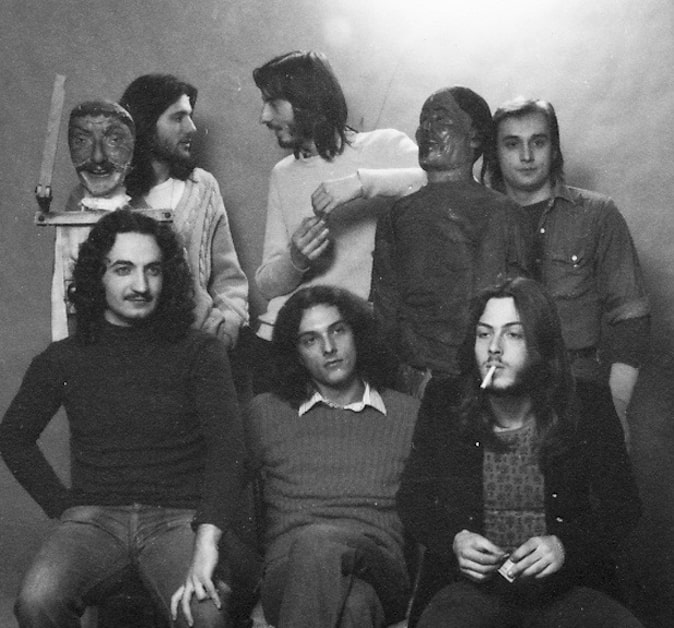
Was there a certain concept behind the album?
As said, from the very beginning, Arti & Mestieri is a group of musicians whose members are from very different music backgrounds, careers and experiences. That’s our characteristic of the band and that always made us produce our unique and original sound, which no other band has. And so was ‘Tilt’. The title, jacket artwork, explains all. Look at the cover artwork, that’s not a gasoline filler, it’s just a funnel but being flooded with a huge amount of cultural information entered and it’s narrowed so it’s overweight and tilt (‘Tilt’) which expresses that only a small amount of cultural information is selected and filtered.

And as the second title ‘Immagini Per un Orecchio,’ the enormous funnel is the listener’s ear, and the music of Arti & Mestieri stimulates the listener’s hearing. It’s a metaphor that Arti & Mestieri’s music is “the infinite images seen by ears”.
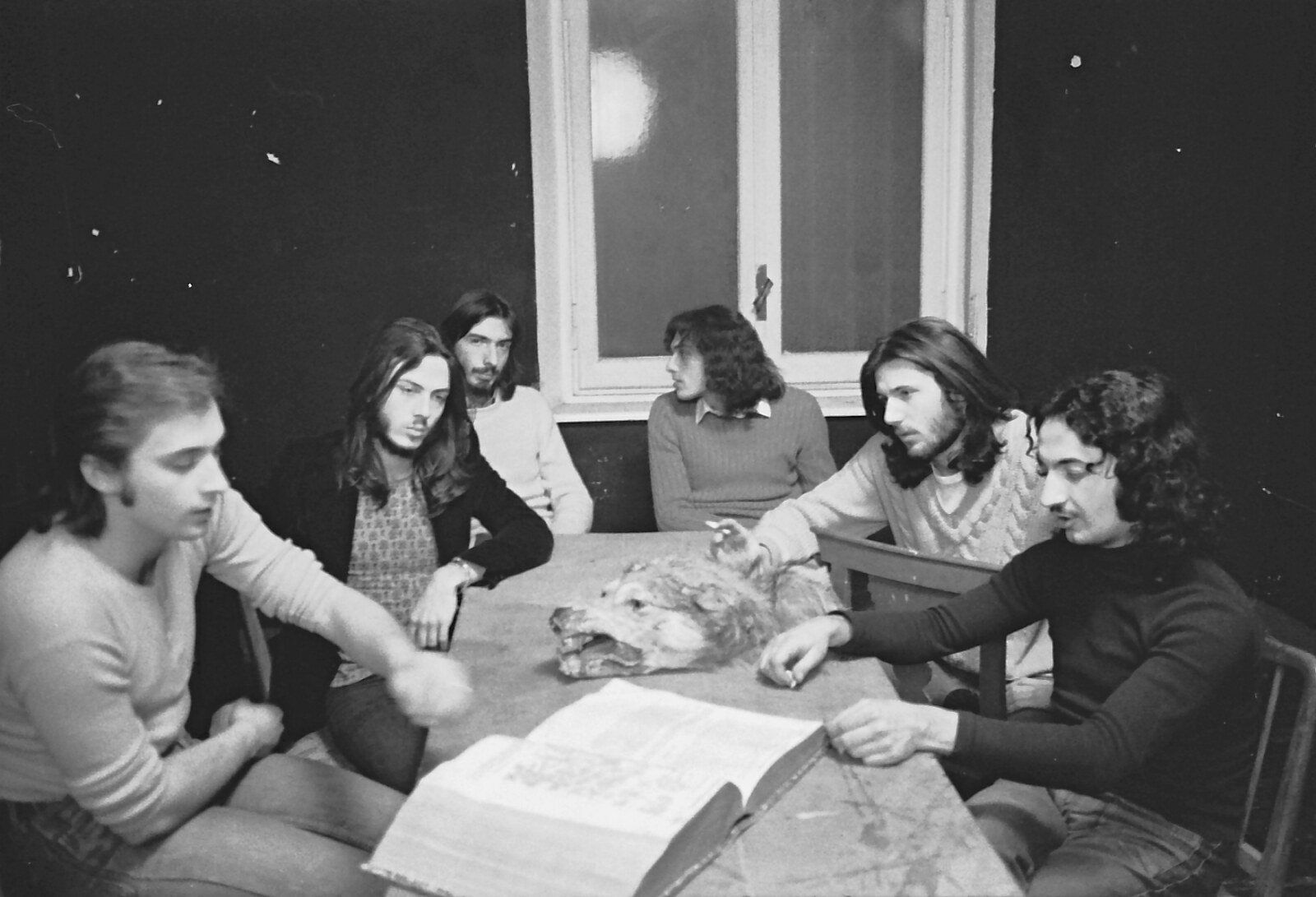
Your following album ‘Giro Di Valzer Per Domani’ sounds quite different.
It goes the same as ‘Tilt’. The main compositional ideas of ‘Giro Di Valzer Per Domani’ are born from Arturo Vitale and Gigi Venegoni ideas, and then being developed, arranged together. That way you can listen to that change of colors in atmosphere, this album is the “fruit” of strong personalization of each band member. It would be impossible to recreate it today. ‘Tilt’ has more of a prog connotation, but some tracks lead to jazz rock.
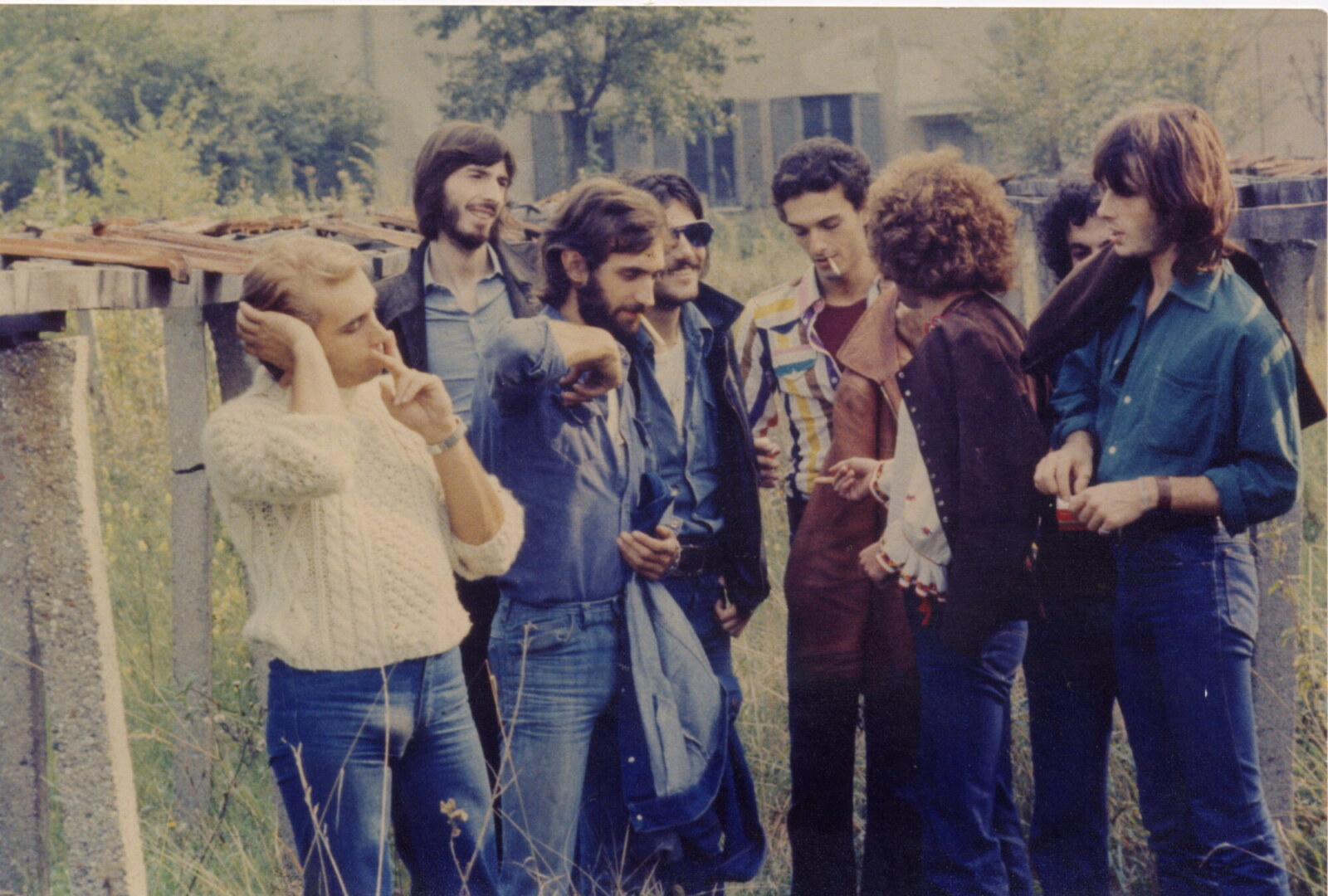
“I often got the best ideas or the best insights on the drums from a synergy of emotions and information, even apparently far from music”
Would you like to comment on your drumming technique? Give us some insights on developing your drumming technique.
I am a left-hander as well as drumming in open-hand. My set-up is peculiarly symmetry developed by myself as “Speculare (mirror symmetry) set-up,” placing everything very compact to avoid wasteful movement. I was already drumming in that way around the mid-1960s. Since then I started improving technically one after another on my own, positioning correctly for myself… Obviously I’ve been busy sticking to the drum every day, doing plenty of things related to the drum… practicing, playing, producing, etc., but I anyway love doing all things well-organized and I’m used to doing it quickly! From day to day I am up to my neck with daily drumming practice at my studio, giving drumming lessons at my school, and preparing for the recording.
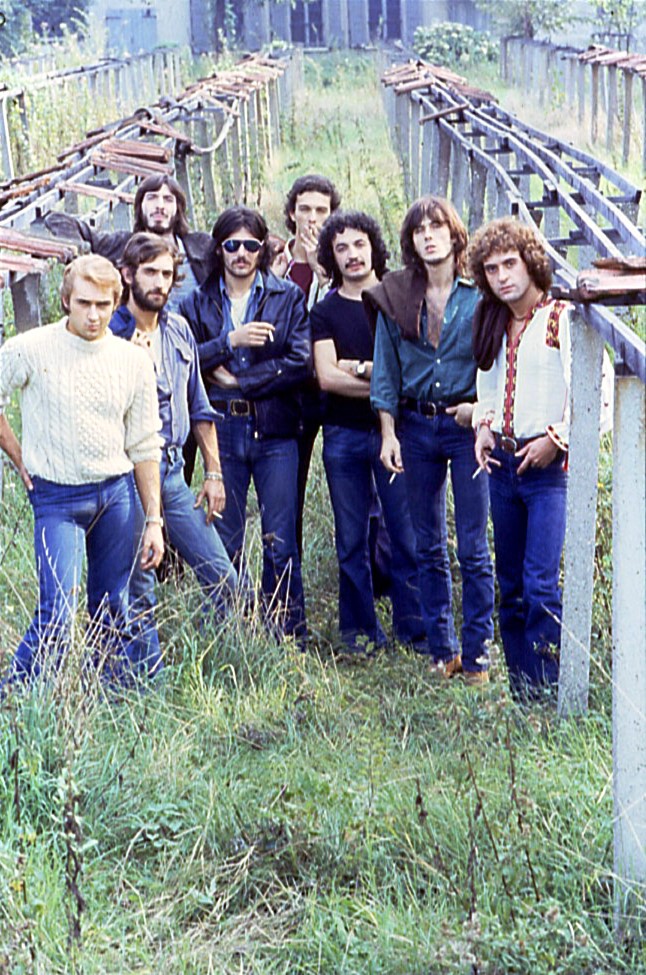
For me, as usual, is the “stress” that makes you grow, especially for a musician. The problem is how to constructively address this stress, whether it is positive or negative. This is a period where the instinct is often banned and many musicians take refuge in “pre-packaged formulas”. Perhaps because of the spirit of survival. But during my long journey of my “drumming” life, similar things happened to me in those types of moments. I have always taken refuge in study and in-depth study. I don’t speak only about the drums, but about everything that surrounded me and that attracted my attention and my curiosity.
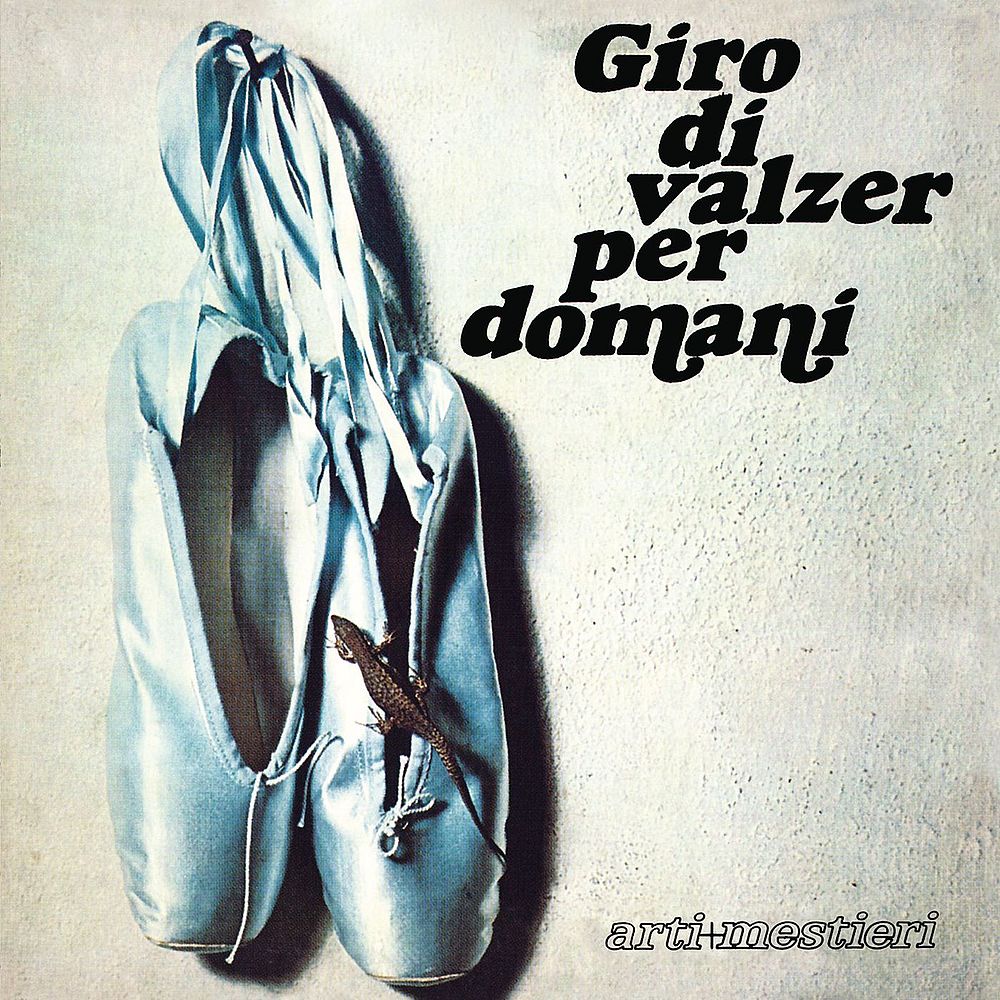
I often got the best ideas or the best insights on the drums from a synergy of emotions and information, even apparently far from music.
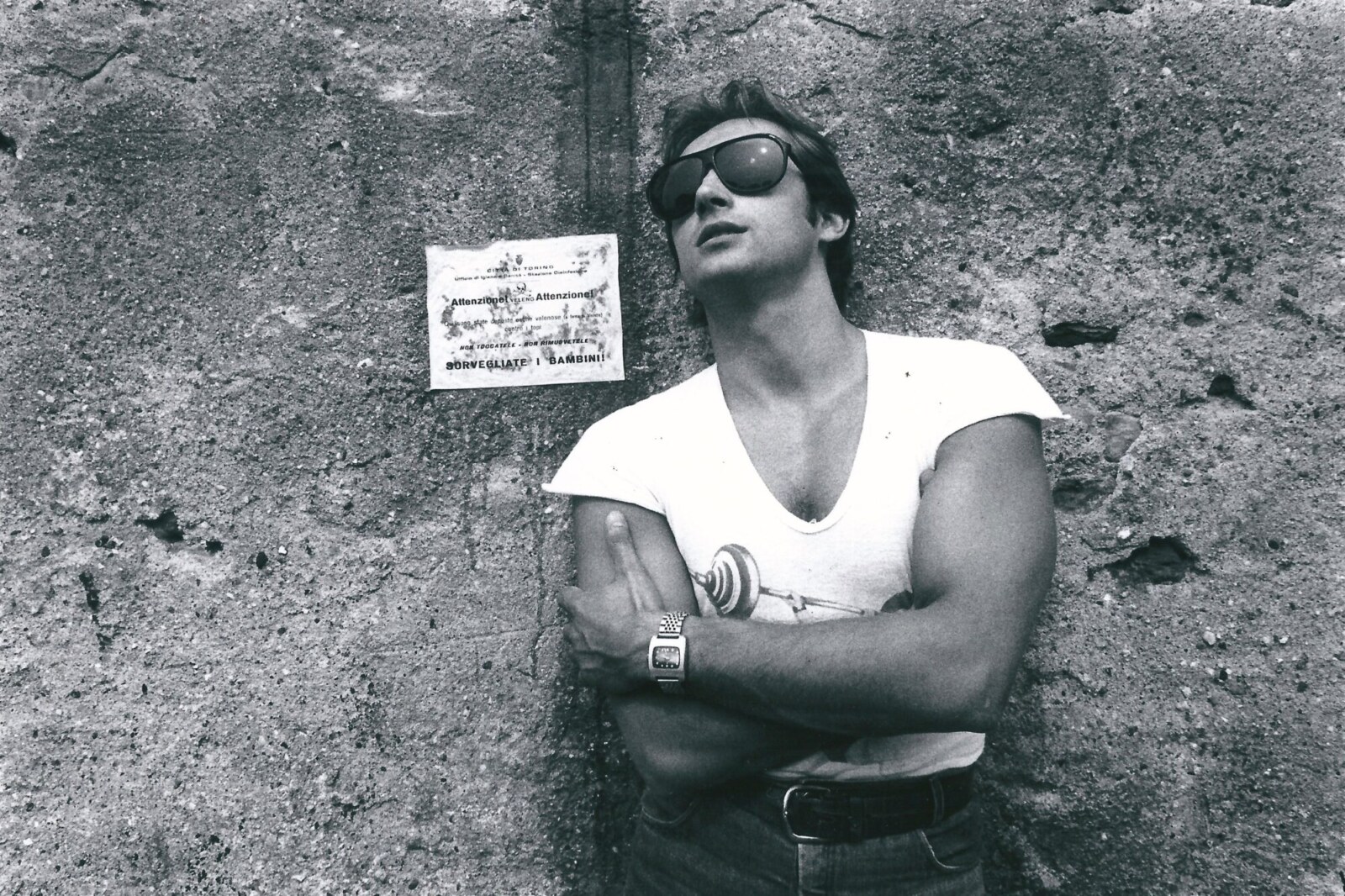
I think there is a great musician who has inspired every instrumentalist, not just drummers. It is important for the player of the instrument to emphasize – not only the technical aspect of the playing technique – but also the artistic aspect of interpretation. You have to polish it, improve it, and keep making a leap forward. What I must not forget more than anything else is the “characteristics” and “individuality” of a drummer that is unique to me, and I think that with all of this, the performer can become an “artist” who can embody every performance.

On ‘Quinto Stato’ you tried something different, do you agree?
Historically it was a very complicated moment for Italy.

Those were the years of terrorism; both the far right and far left political movement and the government was rather corrupt. ‘Quinto Stato’ just speaks about this difficult situation with a double sentiment. The lyrics were so straightforward, whereas the instrumental compositions were a “scene pictured in mind,” more sophisticated and snug.
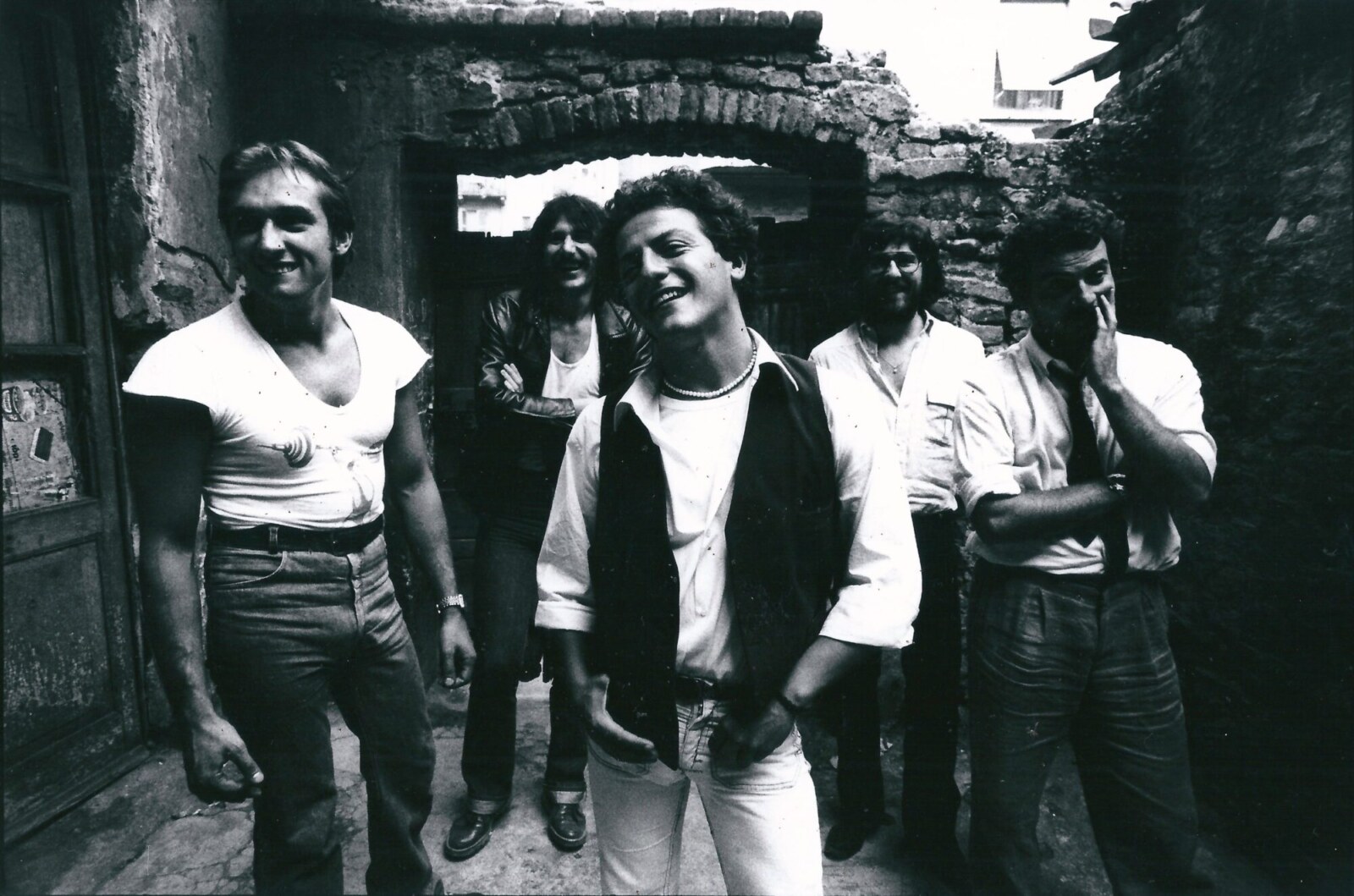
How about the Chirico Camarca Project?
A beautiful trio with two great musicians, Giulio Camarca (father) on guitar and Massimo Camarca (son) on bass. Beautiful music composed by Giulio with great inspirations ranging from jazz rock to funk but above all in latin jazz. ‘Trasamazzonica’ is a “jewel”.
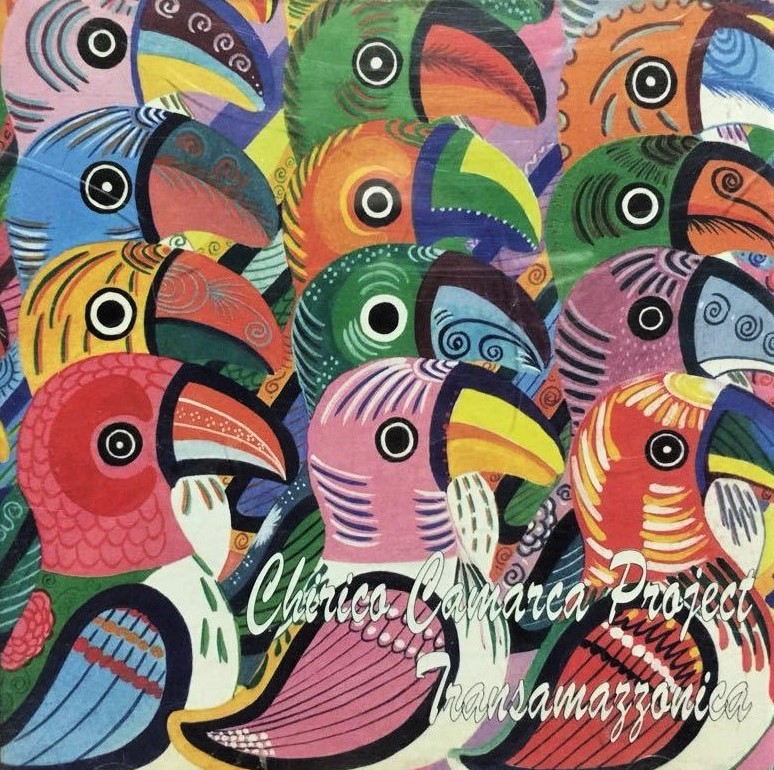
You played with many different musicians. What are some of your albums and collaborations that you are most proud of?
Apart from a few situations, I can say that I’m lucky that musically I always have realized what I wanted, liked, represented me, in collaboration with awesome musicians. Certainly I must highlight having guest musicians such as King Crimson saxophonist Mel Collins in both Arti & Mestieri concerts and some record productions. I also must mention the trumpeter Flavio Boltro who performed with Michel Petrucciani. I was very satisfied with that collaboration.
Looking back, what was the highlight of your time in the band? Which songs are you most proud of? Where and when was your most memorable gig?
There are two bands that are the most important to me. Arti & Mestieri and The Trip. They are also historically important, especially Arti & Mestieri! We had received recognition in Italy and overseas. ‘Tilt’ (1974) is ranked as the no.1 on the “10 best Italian jazz-rock/prog albums” by Rolling Stone magazine! There are many unforgettable concerts, but my favourite are the first one with The Trip right after recording ‘Atlantide’, we were participated in one of the important music festival of prog at Villa Pamphill in Rome with national and international artists, performed in front of 140,000 people out there, a real heavy tank with the The Trip logo on it placed in full crowd!! The second one is the first concert of “Arti” on the occasion of presenting us later we named “Arti & Mestieri” during the concert in 1974 in front of 100,000 people at the Re Nudo festival in the Lambro park in Milan. It was exceptional to have such a “baptism” to become the band! The third one is very important for our career. It was Arti & Mestieri’s first concert in Japan in 2005, performing in front of the Japanese audience at the live theater Club Citta’ Kawasaki (Tokyo). We had two unforgettable shows, both dates sold-out. We finally understood how important the Italian alternative music is to the people of Japan. We also experienced by ourselves what was the reason why the most prestigious international bands love to go to Japan and play in front of the Japanese people.
Is there any unreleased material?
There are always new materials in a musician’s drawer, little by little they will be released!
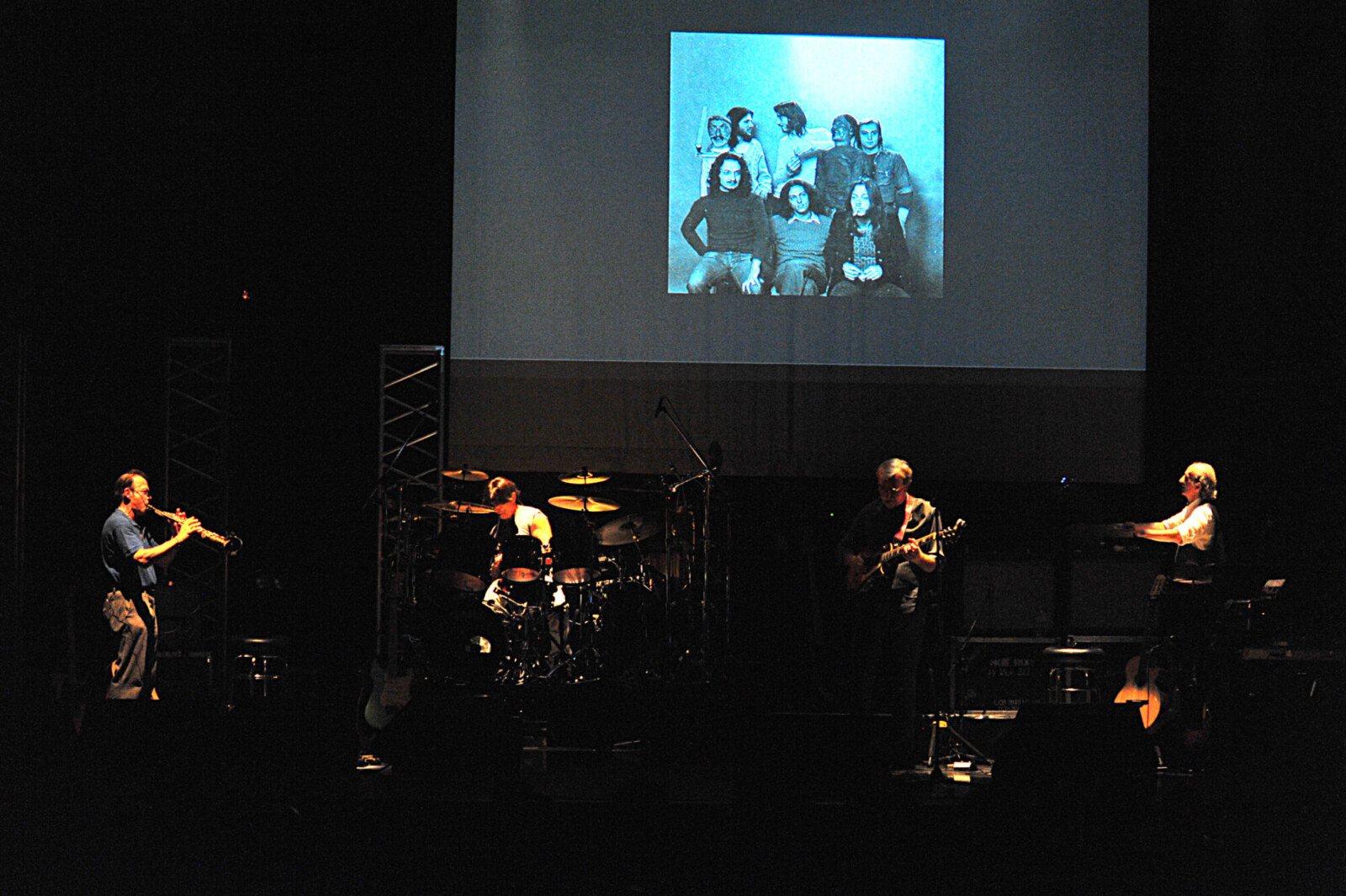
Can you share some further details how your latest album ‘Universi Paralleli’ was recorded and released?
On the return flight from Portugal, where we played at the “Gouveia Art Rock Festival” in 2013, I was reading a very interesting article on the concept of “parallel universes”. At the moment, only random chatter on the subjects but, the idea of a fascinating title for our new CD arose, and so it was. The meaning must be evaluated on two different levels. On one hand, the more scientific interpretation linked to the hypothesis of different realities that exist parallel to our everyday life (Remember the “Matrix”?).
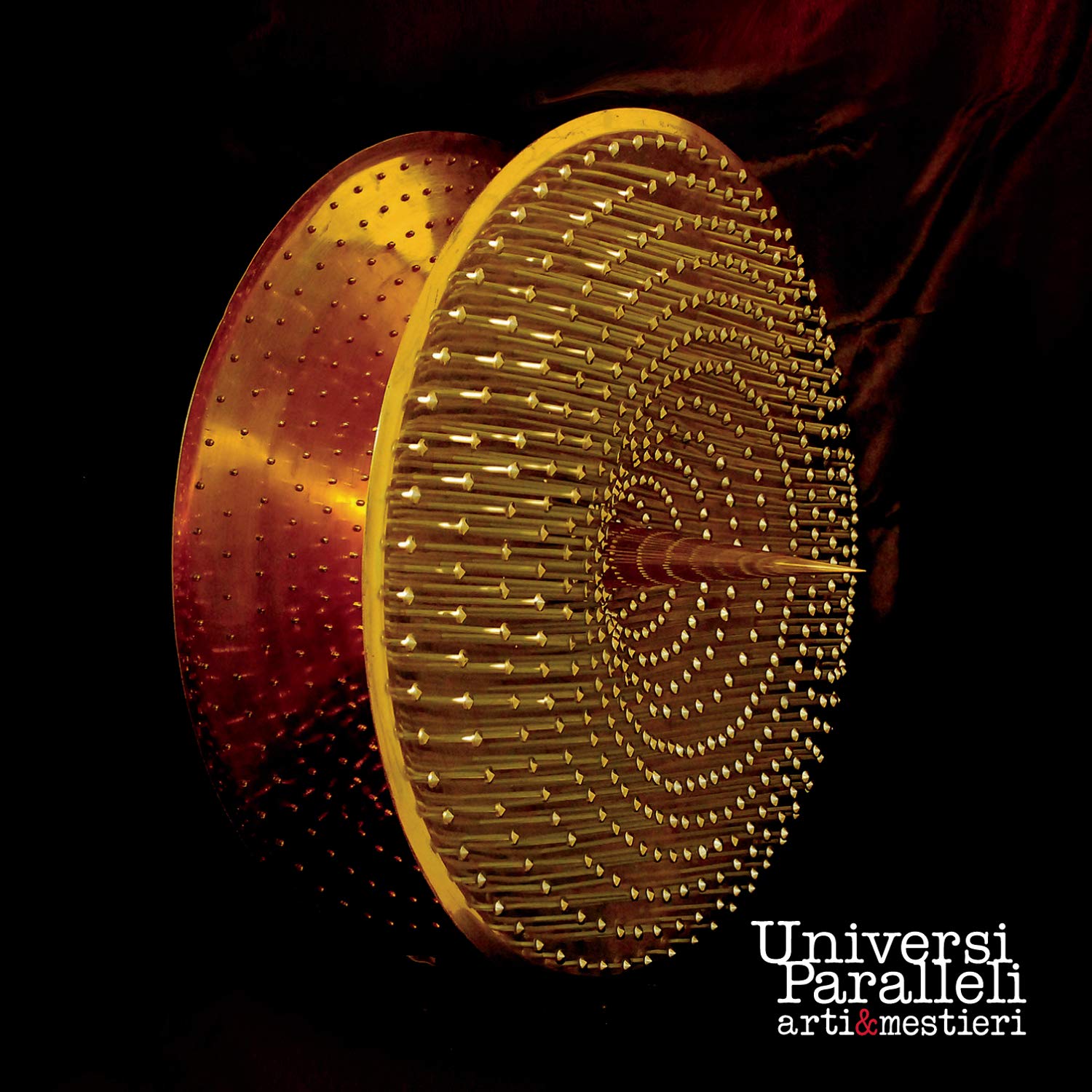
And on the other hand, a more psychoanalytic aspect of double personality that coexists in each of us and that manifests itself according to precise strategies or as a result of unpredictable events.
You know, every fan of Arti & Mestieri evaluate ‘Tilt’ as our best album, but our interest has been high for the last forty years, so we all wanted to compose and record a new album that could live up to the expectations. Idea behind ‘Universi Paralleli’ was to create a new concept album that could be the new masterpiece of Arti & Mestieri after ‘Tilt’ and to celebrate our over 40 years of musical history. ‘Universi Paralleli’ (Parallel Universes in English)’ is the seventh studio recording album, and it’s born under a lucky star, not only for celebrating our long music activities, but also the return of one of the founders and original members of the band: the guitarist and composer, Gigi Venegoni (Luigi Venegoni), and is the gateway of new composer and pianist as well as accordionist, Piero Mortara.
What currently occupies your life? Any future projects we should expect?
Producing music and playing live!!
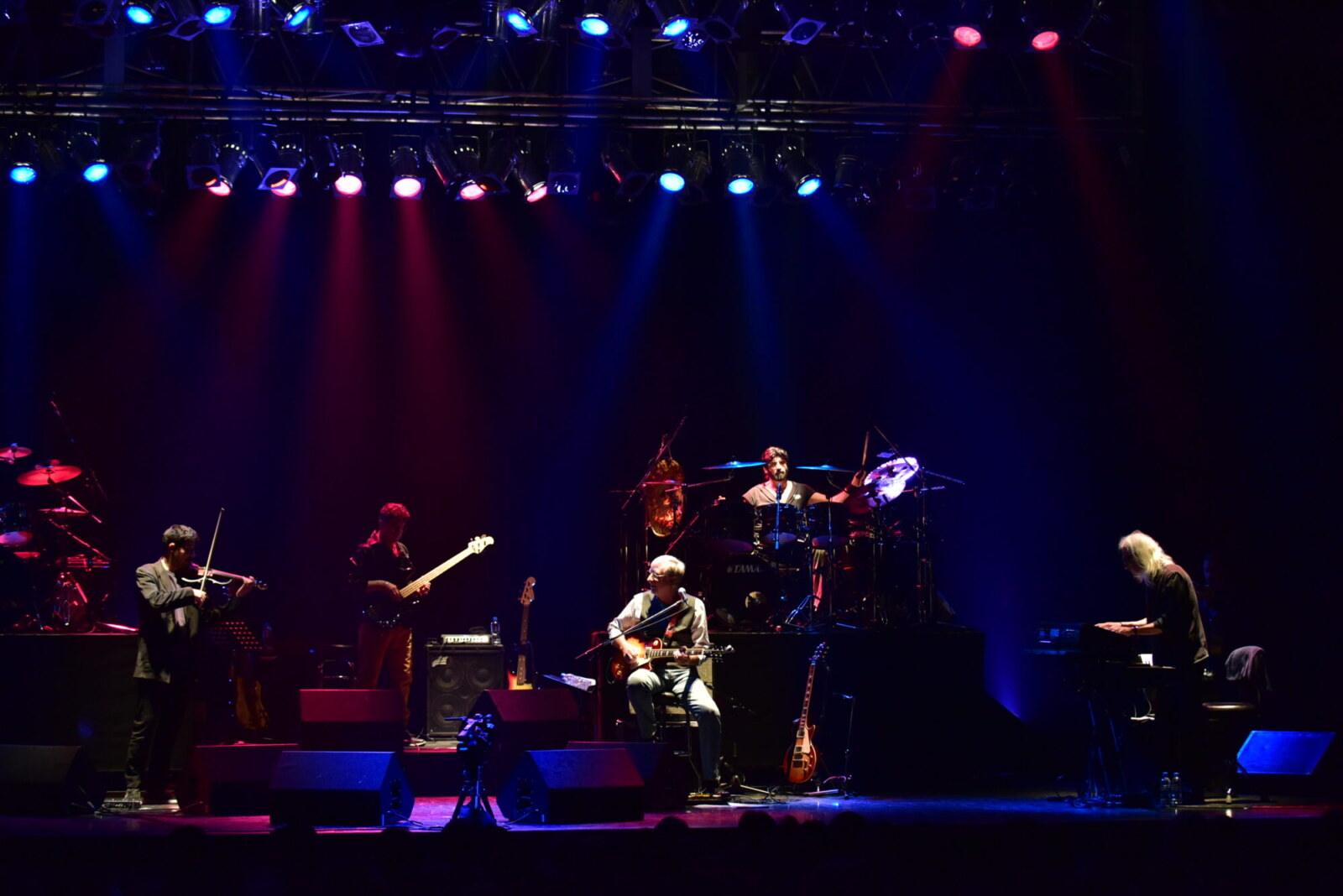
Let’s end this interview with some of your favourite albums. Have you found something new lately you would like to recommend to our readers?
I’m not self-centered, but sincerely I would say that my favorite and my recommendation is our latest release; ‘Essentia, Live In Japan’ (Jazz Rock Legends Live In Japan) released on CD+DVD by two great major labels Warner Music and King Records.
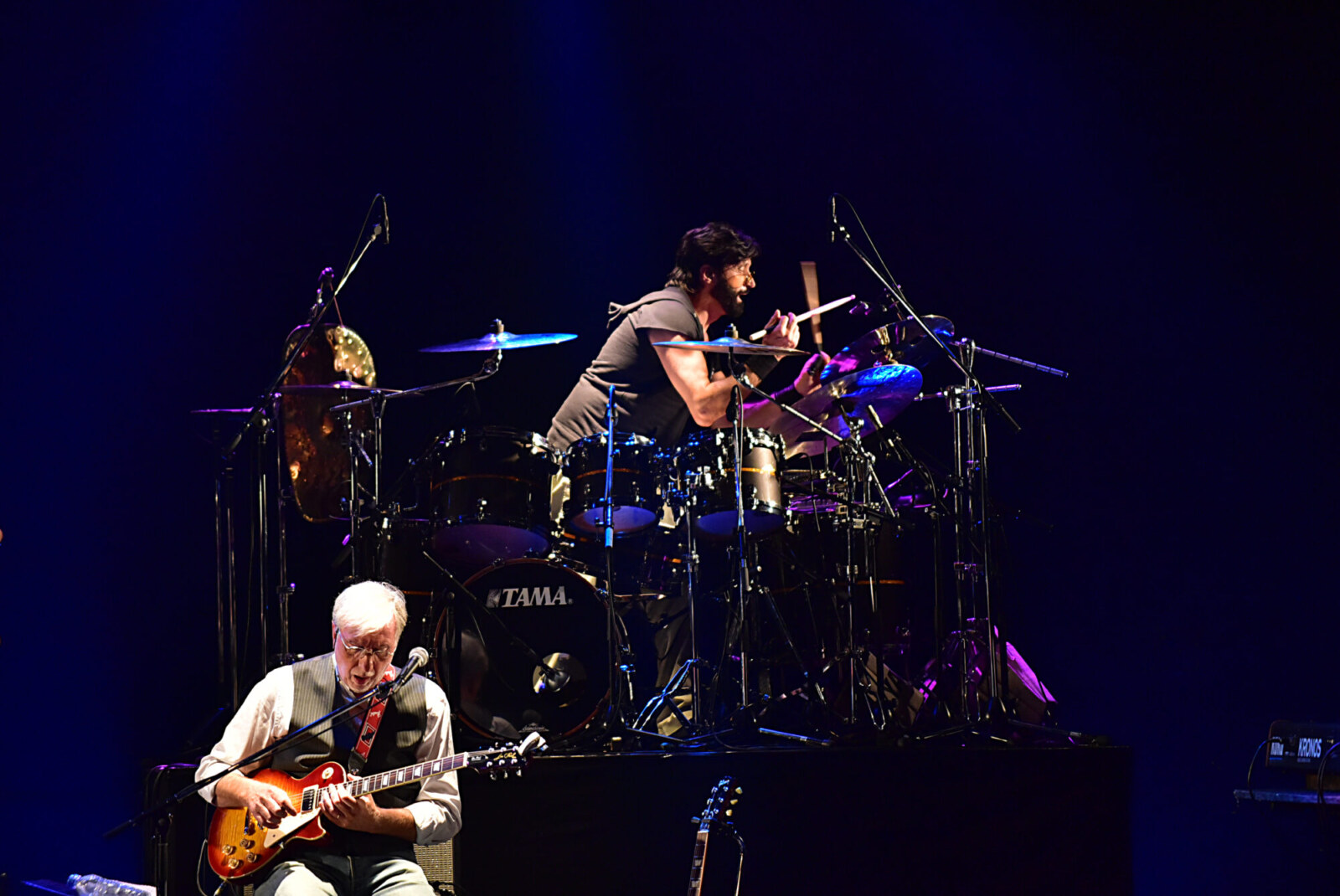
Up to now, we have released twenty one products and this one is the best. Our full live set was audio/video recorded by extraordinary recording facilities and technical Japanese staff, stage production, selections of recording gears etc. are all custom-made.
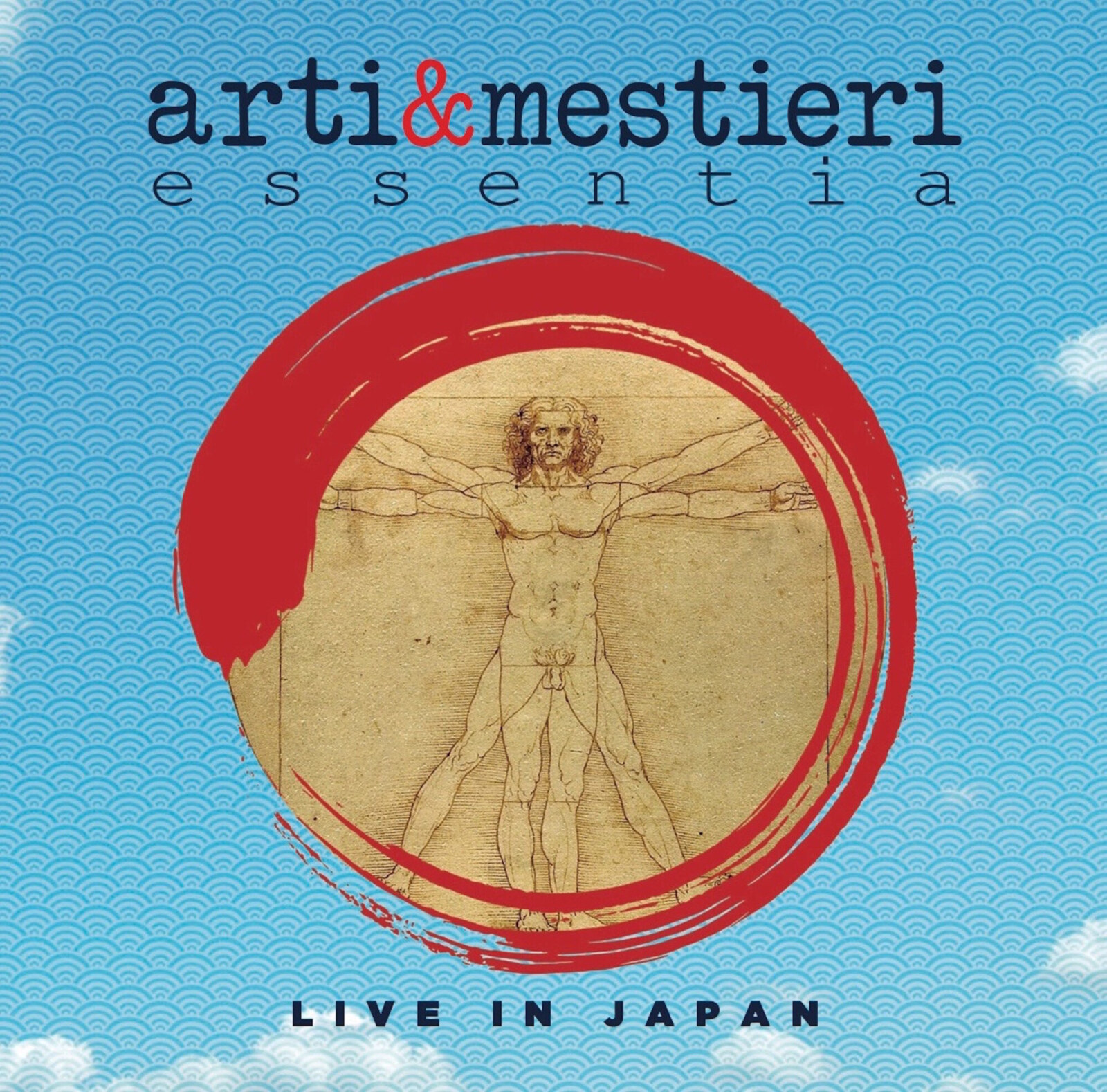
The mixing, the editing and the mastering, are done by excellent staff in Japan and in Italy. During our 46 years career with Arti & Mestieri, we’ve never released a live album as perfect as this one. We really hope that as many readers as possible listen to our current performance.
Thank you for taking your time. Last word is yours.
Only through “live,” Arti & Mestieri is alive and being alive. We are the true “live” band, and I believe the audience can feel that. Live streaming took over these days because of the pandemic, but we don’t want to get used to it!
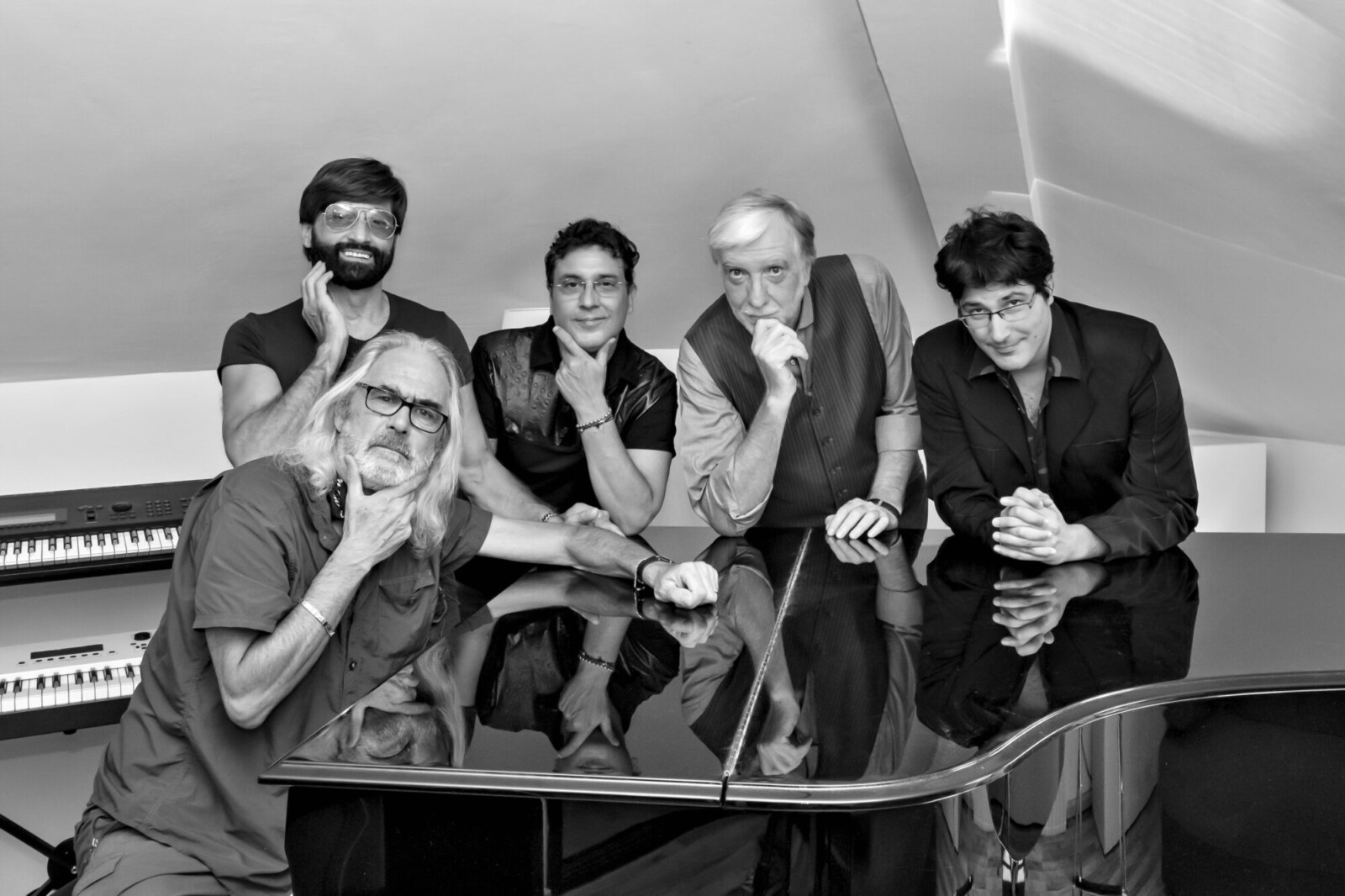
Arti & Mestieri want to play in front of the live audience, and continue to be active and keep on playing for the rest of their lives. A big hug.
Klemen Breznikar
Headline photo: Arti & Mestieri (1974)
Arti & Mestieri Official Website / Facebook / Instagram / YouTube

